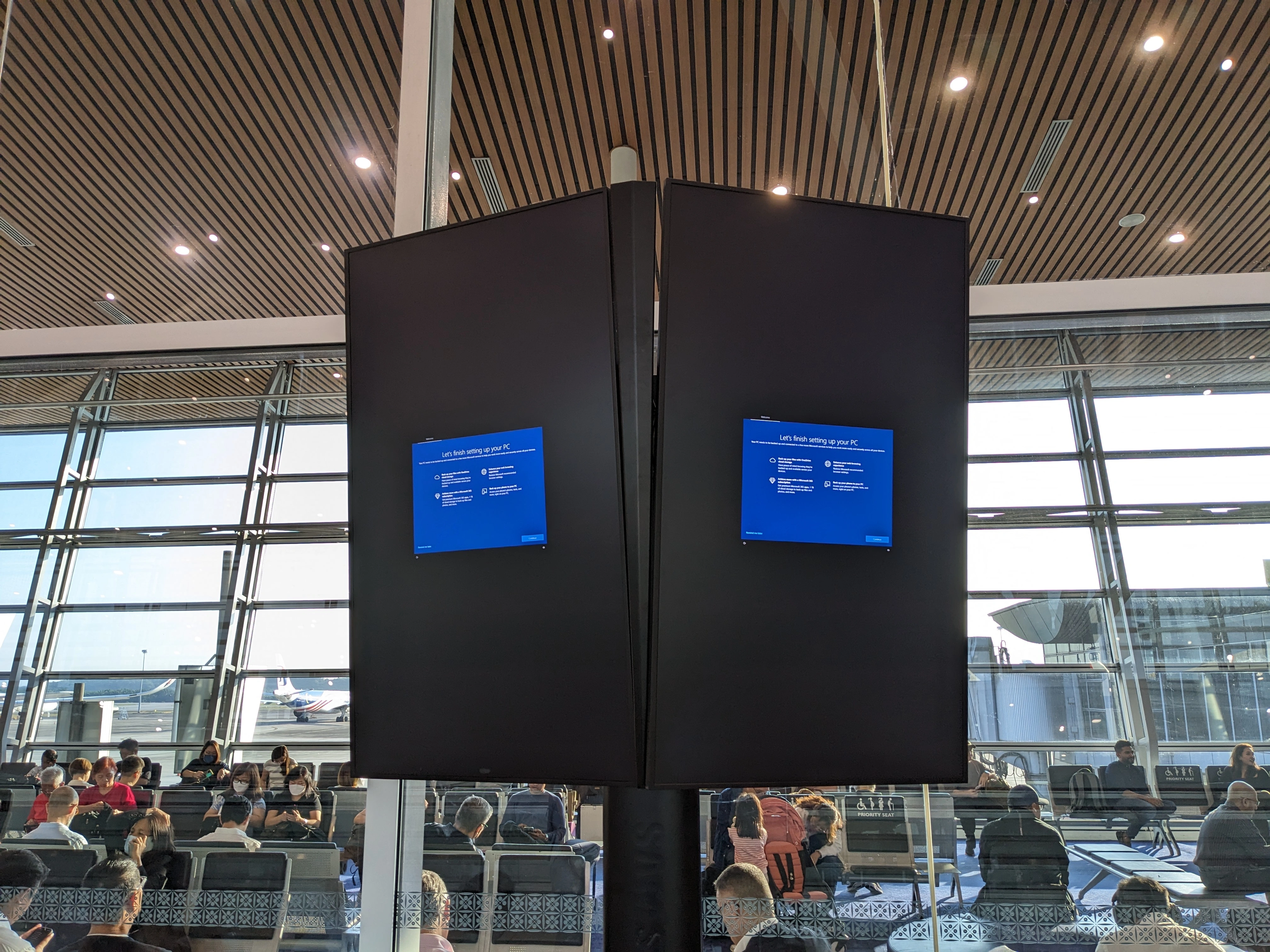

The “carrot in a box” games he played with Jon Richardson on 8 out of 10 Cats Does Countdown are some of my favourite TV ever…


The “carrot in a box” games he played with Jon Richardson on 8 out of 10 Cats Does Countdown are some of my favourite TV ever…


I feel compelled to quote the late great Sean Lock:
“I’m incredibly organised. Like for example, if I make tea, I don’t make one cup of tea - I’ll make a big batch of tea and then I’ll have a cup of tea and then I’ll freeze the rest of it. And then when I want to have a cup of tea, I’ll just break off a bit of frozen tea. Put it in a pan. 25 minutes later I’ve got a lovely cup of tea without all the all the hassle.”
I get that, and it was almost certainly Booking.com who leaked it as I have had shady messages through even their own messaging platform before…
I think what baffles me is that this gets so close to convincing (if you’re not internet savvy), and then they throw in something so bizarre like having a username of “Rus Education” 🙄
Unfortunately, I just don’t have the social capital to move people off of Meta messaging services… A good 50% of my friends have ditched FB, but somehow saw WhatsApp as the solution 🤦
I assumed because the category was “things that aren’t actually real chips / potato fries” - by being real pieces of fried potato these are disqualified 😅
Embrace the analogue radio.
Do take rest stops - you won’t realise you’re tired until it’s too late.
Check out this elite human, somehow certain it’s not drug or alcohol related.
That’s cool, nothing bad ever happens when Germany’s economy tanks…


Based on how you’re observing the loading move from 100% CPU ro 100% GPU, I would suggest that it is “working” to some extent.
I don’t have any experience with that GPU, but here’s few things to keep in mind with this:
When you use a GPU for video encoding, it’s not the case that it’s ‘accelerating’ what you were doing without it. What you’re doing is switching from running a software implementation of an HEVC encoder on your CPU to running a hardware implementation of an HEVC encoder on your GPU. Hardware and Software encoders are very different to one another and they won’t combine forces; it’s one or the other.
Video encoders have literally hundreds of configuration options. How you configure the encoder will have a massive impact on the encoding time. To get results that I’m happy with for archiving usually means encoding at slower than real-time for me on a 5800X CPU; if you’re getting over 100fps on your CPU I would guess that you have it setup on some very fast settings - I wouldn’t recommend this for anything other than real-time transcoding. Conversely, it’s possible you have slower settings configured for your GPU.
Video encoding is very difficult to do “well” in hardware. Generally speaking software is better suited to the sort of algorithms that are needed. GPUs can be beneficial in speeding up an encode, but the result won’t be as good in terms of quality vs file size - for the same quality a GPU encode will be bigger, or for the same file size a GPU encode will be lower quality.
I guess this is a roundabout way of suggesting that if you’re happy with the quality of your 100fps CPU encodes, stick with it!
Single GPU with scripts that run before and after the VM is active to unload the GPU driver modules from the kernel.
I think this was my starting point and I had to do just a few small tweaks to get it right for my setup - i.e. unload and reload the precise set of kernel modules that block GPU passthrough on my machine.
https://gitlab.com/Karuri/vfio
At this point from a user experience p.o.v it’s not much different to dual booting, just with a different boot sequence. The main advantage though is that I can have the Windows OS on a small virtual harddrive for ease of backup/clone/restore and have game installs on a dedicated NVME that doesn’t need backing up
I’ve been 100% linux for my daily home computing for over a year now… With one exception… To be honest I didn’t even try particularly hard to make gaming work under Linux.
Instead I have a Windows VM - setup with full passthrough access to my GPU and it’s own NVME - just for Windows gaming. To my mind now it’s in the same category as running console emulation.
As soon as I click shutdown in windows, it pops me straight back into my Linux desktop.


This video of one of the rioters getting repeatedly struck with bricks thrown by his own mates is well worth a watch… Or two… Or three…
I had some hard to track down intermittent network issues when I upgraded from LMDE5 to LMDE6 - the solution was to get a newer kernel from backports - its fairly painless…
I guess my point is that it isn’t a particularly important part of the design of Wi-Fi - they included it in the very first iteration in 1997 and realised by 1999 they didn’t need it. Therefore Wi-Fi would likely have been born regardless of the invention; Bluetooth would not.
Great to recognise this invention.
I was surprised by the choice of ‘Mother of Wi-Fi’ though - Wi-Fi hasn’t used ‘frequency hopping’ as such since 802.11b was released back in 1999 - so very few people will have ever used frequency-hopping Wi-Fi.
GPS only uses it in some extreme cases I think, but I’m not an expert.
However, Bluetooth absolutely does depend on it to function in most situations, so ‘Mother of Bluetooth’ might have been more appropriate.


The real question is why did they install a system based on 5.25" floppy disks in 1998 in the first place!?
The 5.25" floppy was surpassed by the 3.5" floppy by 1988 - ten years prior to this systems installation - and by 1998 most new software was being distributed on CD-ROM. So by my reckoning, in 1998 they installed a ‘new’ system based on hardware that was 1.5 generations out-of-date and haven’t updated it in the 26 years since.


At Kuala Lumpa International Airport half the signs were like this near our gate a couple weeks ago…

I also wasn’t aware so had a search.
If you don’t mind Reddit, this thread is interesting… https://www.reddit.com/r/rails/comments/133lcyl/can_someone_explain_what_happened_with_the/
Or there’s this… https://www.theverge.com/2021/5/3/22418208/basecamp-all-hands-meeting-employee-resignations-buyouts-implosion
Edit: Actually this is probably the most comprehensive summary: https://schneems.com/2021/05/12/the-room-where-it-happens-how-rails-gets-made/#the-basecamp-incident